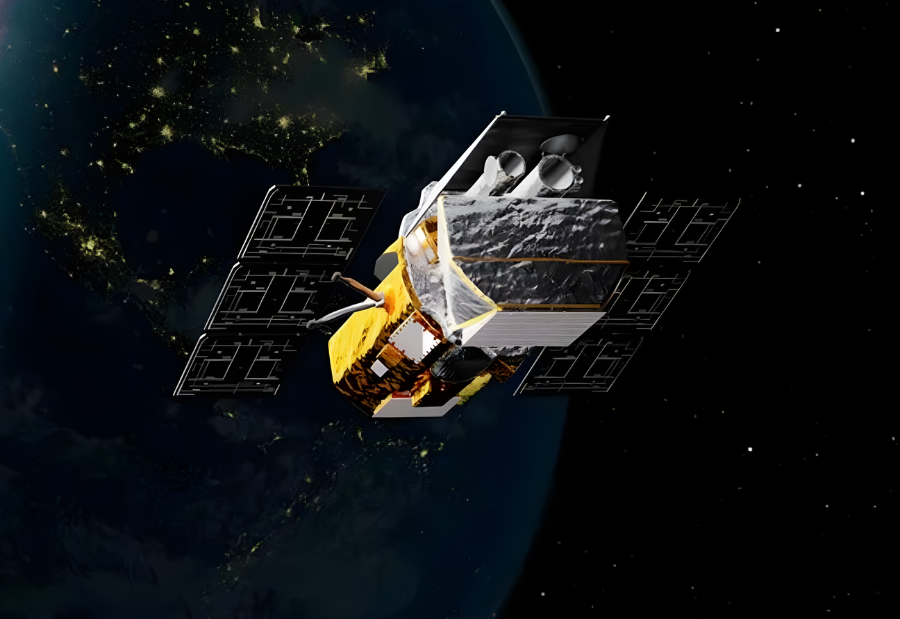A National Aeronautics and Space Administration (NASA) telescope that orbits Earth is slowly descending and now faces about a ninety per cent chance of an uncontrolled re entry by late twenty twenty six. To reduce this risk and extend the life of the observatory, NASA has selected an aerospace startup in Arizona to carry out a rescue mission.
Katalyst Space Technologies, based in Flagstaff, has received thirty million dollars from NASA to raise the orbit of the Neil Gehrels Swift Observatory. Katalyst is developing a spacecraft called LINK. It is designed to meet Swift autonomously and move it into a safer and more stable orbit. Under the contract, Katalyst has less than eight months to launch LINK and complete the rescue. The target deadline is June twenty twenty six. According to a company statement, the mission will use a rocket that is released from an aircraft.
The Swift observatory was launched in two thousand four to study gamma ray bursts which are among the strongest known explosions in the universe. Over nearly twenty years in low Earth orbit, the observatory has slowly drifted to a lower altitude which is common for satellites. Recent increases in solar activity have added more atmospheric drag and sped up its orbital decline.
As Swift moves lower, this rising atmospheric resistance increases the chance of re entry. Swift would probably break apart during re entry and pose no danger to people or property on Earth. NASA and Katalyst still aim to keep it active for a longer period.
Katalyst has selected Northrop Grumman’s Pegasus XL rocket for the rescue mission. This will be the first Pegasus launch in several years. Pegasus is an air launched rocket. It is released from a carrier aircraft at about thirty nine thousand feet which is nearly twelve thousand metres. It then falls freely for a few seconds before its engines ignite and push it into orbit. Katalyst says Pegasus is well suited for this mission because of the tight schedule, limited budget, and the angle of Swift’s orbit.
A major challenge is that Swift’s orbit is tilted at about twenty point six degrees. This tilt helps the observatory avoid the South Atlantic Anomaly which is a region of weaker magnetic field that increases radiation exposure. Kieran Wilson who is Vice President for Technology at Katalyst has said in interviews that reaching that orbit from standard ground launch sites would need a large amount of fuel. The air launch design of Pegasus helps reduce that issue.
After launch, LINK will carry out precise operations to approach Swift. Swift was not built for servicing so it has no docking ports or capture points. LINK will therefore use a special robotic capture system to attach itself and then lift Swift to a higher orbit.
If the mission succeeds it will extend the life of an important scientific satellite and show NASA a new and valuable capability. It could change how ageing satellites in low Earth orbit are supported in the future.
Also read: Viksit Workforce for a Viksit Bharat
Do Follow: The Mainstream formerly known as CIO News LinkedIn Account | The Mainstream formerly known as CIO News Facebook | The Mainstream formerly known as CIO News Youtube | The Mainstream formerly known as CIO News Twitter
About us:
The Mainstream formerly known as CIO News is a premier platform dedicated to delivering latest news, updates, and insights from the tech industry. With its strong foundation of intellectual property and thought leadership, the platform is well-positioned to stay ahead of the curve and lead conversations about how technology shapes our world. From its early days as CIO News to its rebranding as The Mainstream on November 28, 2024, it has been expanding its global reach, targeting key markets in the Middle East & Africa, ASEAN, the USA, and the UK. The Mainstream is a vision to put technology at the center of every conversation, inspiring professionals and organizations to embrace the future of tech.




